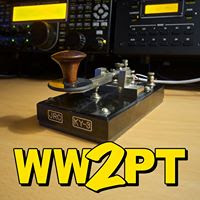Observing: TV85 at Whiskey Hill
 Imagine fancying yourself a music lover who has been listening to Mozart, Coltrane and Deep Purple for years on a cheap monophonic cassette player. Then one day, you find yourself with a top-notch stereo and a whole new world unfolds. That's how I feel after spending an hour or so tonight under some unbelievably dark skies out at Linda's folks' place.
Imagine fancying yourself a music lover who has been listening to Mozart, Coltrane and Deep Purple for years on a cheap monophonic cassette player. Then one day, you find yourself with a top-notch stereo and a whole new world unfolds. That's how I feel after spending an hour or so tonight under some unbelievably dark skies out at Linda's folks' place.We pulled in just after dusk and it was already dark enough to see the Milky Way straight overhead. I waited an hour or so for it to get seriously dark then John and I set up the TV85 in John's stone house (which is without a roof, thankfully). After we turned off a few lights out by the livestock and covered a window with a sheet of plywood to block the light from the house we got down to some observing.
The dark lanes through Cygnus were not just visible, but actually dark. Incredible. My first target was the Double Cluster in Perseus. Simply beautiful - two clumps of diamonds amid a background of stars that I couldn't even imagine seeing back home. M13 was next, and even with the TV85 I was able to resolve some of the outer stars of the cluster. Ditto M15. The Andromeda galaxy (M31) was still just a smudge, but it was a bigger smudge than I've become accustomed to seeing with the small scope under brighter skies. Albireo split into it's bright blue and yellow pair with the LVW 13mm. Dead batteries in the Starbeam finder kept me from picking off more objects, as it took a bit of effort to put the easy stuff into the FOV.
Unfortunately it was short lived - the Milky Way quickly began to fade, the dark lanes disappeared, and the sky brightened as the Moon rose in the East. How cruel the gods are. We didn't stay out much longer, but I wasn't planning on an all-night session - I just wanted to get my feet wet, so to speak, to get an idea what it's like out at Whiskey Hill. I'll be watching the weather forecasts for next weekend which will be right around New Moon (+/- a couple of days).























































